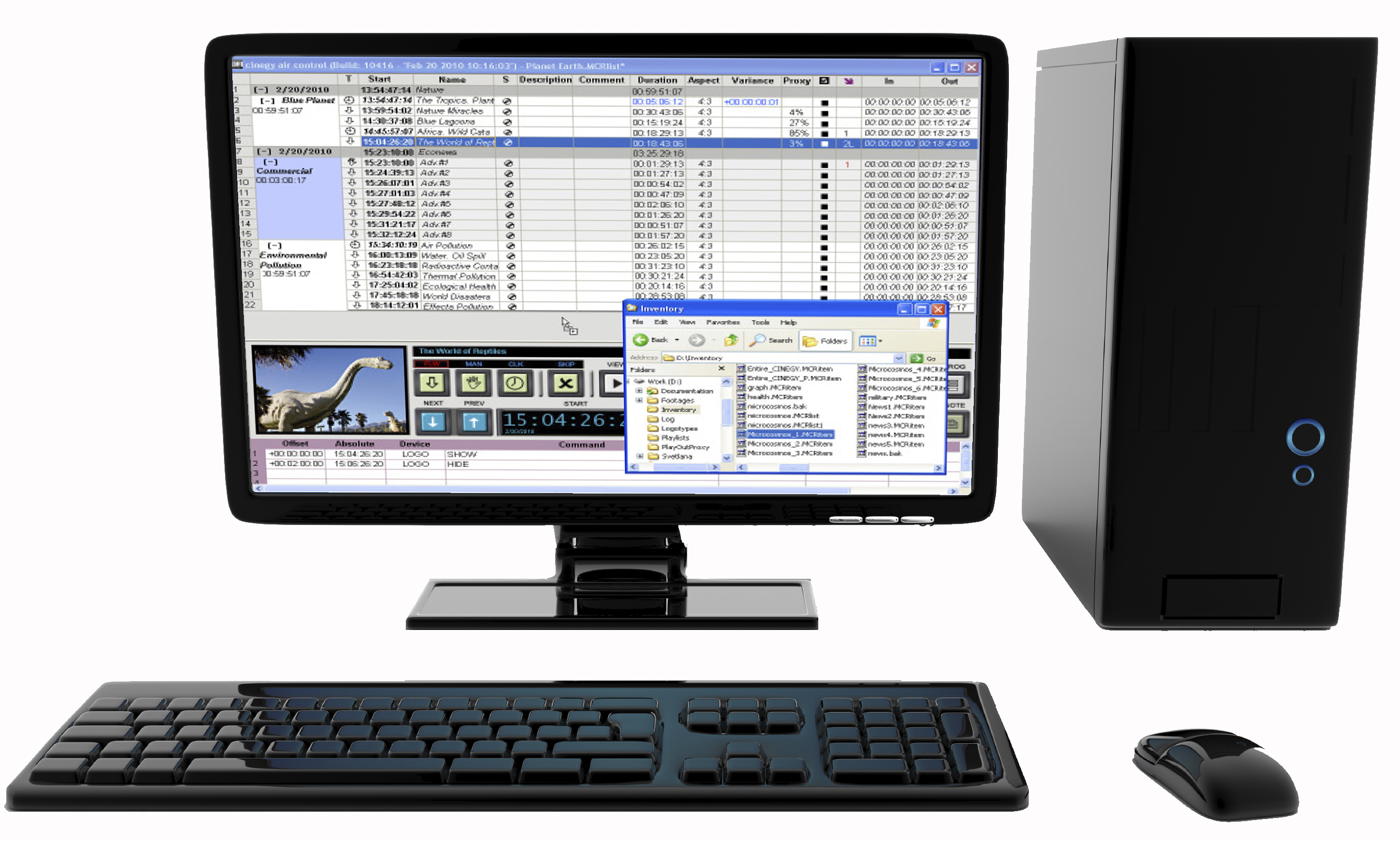Cinegy Air SOLO
Cinegy Air SOLO is the entry-level version of the successful Cinegy playout products that is used by hundreds of TV channels around the globe. It has more features and capabilities than most other vendor’s solutions, which are also many times more expensive. Affordability is not just limited to the price of the software.Operating and maintaining Cinegy Air SOLO is considerably easier and less expensive than other existing solutions. Cinegy Air SOLO provides a broadcast automation and control front-end and a real-time video server for SD and/or HD playout in an integrated software suite. Designed to meet the most demanding requirements Cinegy Air SOLO effortlessly succeeds where so many others fail. Cinegy Air SOLO can be used to control playout to airor to plan schedules, program and commercial blocks offline. Offering unparalleled flexibility by playing mixed format and mixed resolution content, inserting logos, adding overlays and controlling external devices. Cinegy Air SOLO supports simulcast output via SDI and/or IP streams for ATSC/DVB or web usage.
Overview
Cinegy Air SOLO performs video playout by acting as a TCP/IP-connected video “printer”offering its services in a network. The Cinegy Air SOLO broadcast automation software connectsto the playout engine and instructs it what to “print” to air and when. Cinegy Air SOLO consistsof two elements, Cinegy Air SOLO Control and Cinegy Air SOLO Engine. Cinegy Air SOLO Control provides a state-of-the-art interface for controlling a Cinegy Air SOLO service playout channelconnected via TCP/IP. Cinegy Air SOLO Engine executes the playlist provided to it and renders video and audio to air. It also sends real-time video stream feedback to the Cinegy Air SOLO Control interface, eliminating the need for video control monitors as well as SDI cabling and routing. In small environments,Cinegy Air SOLO Control and Cinegy Air SOLO Engine can run on one PC – basically a “TV channel in a box”.
Simple Operation
The Cinegy Air SOLO Control user interface is easy to use. Next to the traditional playout schedule list it also provides a horizontal timeline view. Items can be added by drag & drop. An item for example, could be a video file of any video format supported, which is almost all. Items in the list can be previewed, trimmed, and cut – all using the Cinegy Air SOLO Control user interface builtin player/editor tool. In the playout schedule items can be grouped into threedifferent hierarchy levels which can be collapsed and expanded to improve read ability. All the functions required for modern playout automation are available with Cinegy Air SOLO, including placeholder items, secondary events, manual end, clocked and joined-in progress triggers as well as loop playback of items andblocks of items. Cinegy Air SOLO Control can be installed on any machine in a network and playlists can be created in online or offline mode. Prepared blocks and play lists can be saved to file and then appended or inserted to the live playlist. Cinegy Air SOLO Engine continues to play existing playlists unattended until modified by Cinegy Air SOLO Control.
Features
• Next generation, real-time broadcast automation and master control roomsoftware.
• Real-time, network service-based video playout operated remotely via TCP/IP.No need for SDI control monitors.
• Support for all common video file formats, including AVI, DV, HDV, IMX,XDCAM SD/HD, MPEG-2 (up to 1080i 4:2:2), AVID DNxHD, MXF MPEG-2Long GOP, MXF AS-03, AVC-Intra, Quicktime & Windows Media.
• High-availability and fault-tolerance through optional pre-fetching withlocal caching and optional failover mirror channels.
• Simulcast HD/SD playout. Simultaneously playout of a single playlist inSD and HD (HD version).
• Automated ‘pass-through’ mode for the live shows.
• Horizontal timeline view provides a clear overview for easy operations.
• MXF AS 02/03, MXF AS/11 support.
• Secondary events for external device control.
• Up to 32-channel audio routing and pre-set matrixing.
• Schedule voice-over or other audio elements to play over clips withmain audio ducking.
• Local or remote control operation via LAN or WAN.
• GPI events processing for automatic commercial insertion.
• Broadcast directly to the Internet using Web streaming.
• MPEG-2 and H.264 transport streams can be generated as an alternativeto SDI output or simultaneously with it.
• As-run log generation.
• Closed caption / V-Chip / VANC pass-through with AFD signaling
• SDI video router modules to support automatic video/audio signal switchingof input and output signals.
• Exceptional return on investment and total cost of ownership.
• Logo insertion
• Cinegy Type integration


